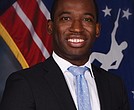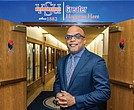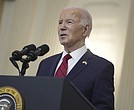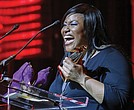Opportunity time
6/29/2018, 5:53 p.m.
Looking around the city, the signs of change and growth are visible.
Bulldozers and cranes are visible throughout Downtown. Construction equipment abounds in the East End. And work is happening in South Side and Scott’s Addition and planned for Jackson Ward.
Many of the projects are taking place with the support of our tax dollars, such as the Church Hill North project on the site of the former Armstrong High School on 31st Street. When this estimated $34 million portion of the project is completed, more than 100 townhouse-style apartments and senior residences will grace the 22-acre site.
While these projects signal progress for the city, African-American contractors and other black-owned businesses say they are being left out or shorted when it comes to a piece of the action.
A. Hugo “Al” Bowers Sr., head of the Black Business Alliance of Virginia, and organization member Earl Bradley want to make sure that the promise of economic prosperity these projects portend is fulfilled within the African-American community — through job creation, not only for contractors and suppliers, but for residents of the neighborhoods and communities where these projects are going up.
In an article in this edition of the Free Press, Mr. Bowers and Mr. Bradley talk about the history of missed opportunities to lift all boats within Richmond and their push for inclusion in the big-dollar, city-backed projects underway and on the drawing board for the Richmond Coliseum area and the East End.
Add to that the multimillion-dollar new school construction projects and renovations about to get underway in Richmond.
The city’s Office of Minority Business Development established an overall goal of 17 percent participation in contracting opportunities for what is termed Disadvantaged Business Enterprises beginning July 1, 2015.
Has it met that goal?
There are serious doubts, according to Mr. Bowers and Mr. Bradley.
Richmond residents deserve to know whether that goal has been met, particularly with the abundance of city-funded projects that have taken place since 2015.
This is opportunity time for the City of Richmond, its elected officials, administrators, public servants and residents.
We call on officials of the City of Richmond to make good on the stated mission and vision of greater economic and social equity in our community through parity in contracting and procurement of goods and services, and in helping to lift the 25 percent of our city’s residents who live in poverty.
Continual, systematic and vigorous efforts are paramount to make that promise a reality.







